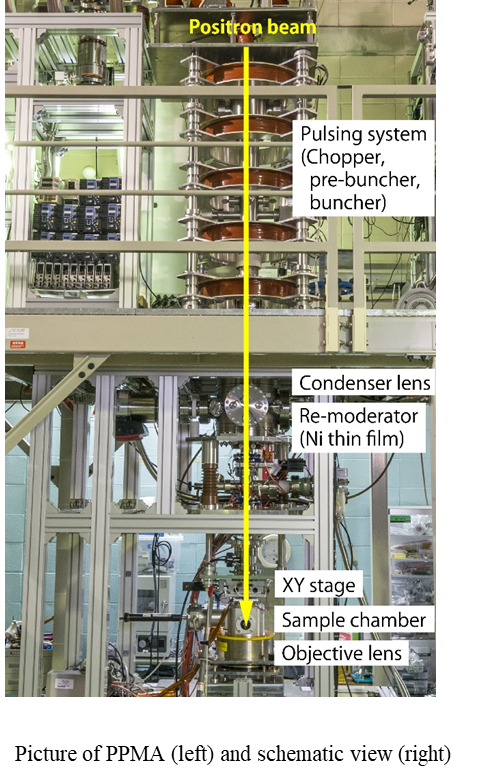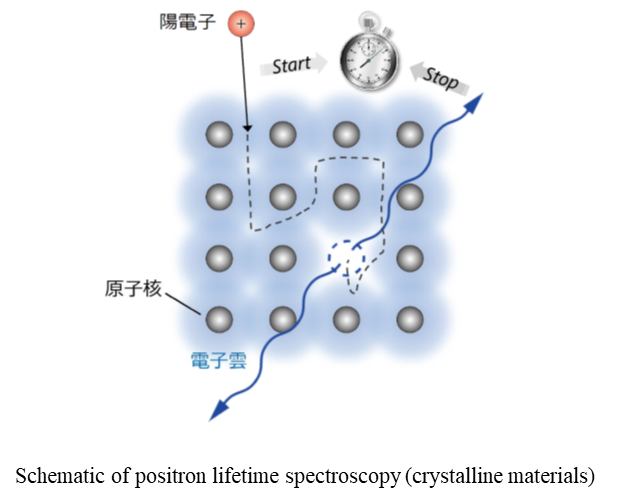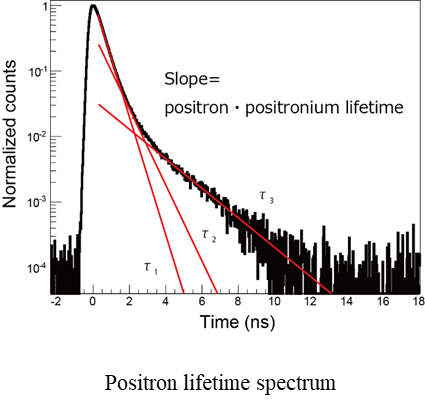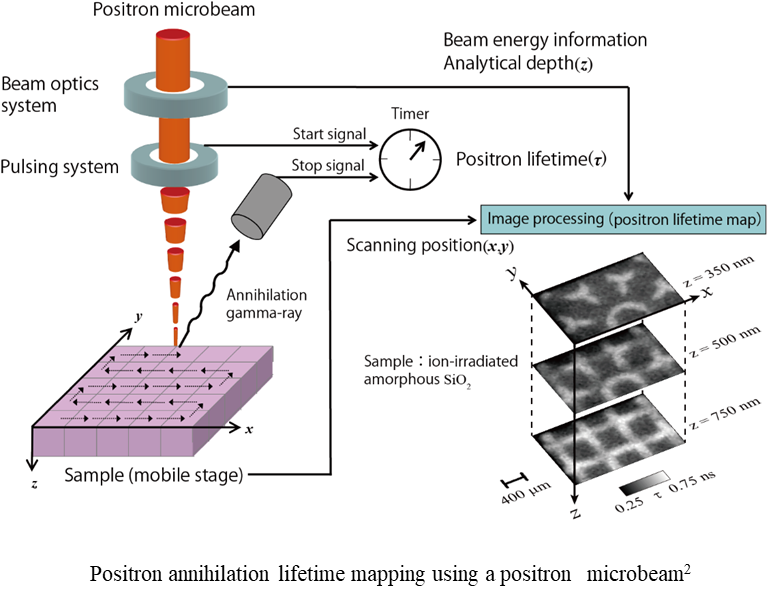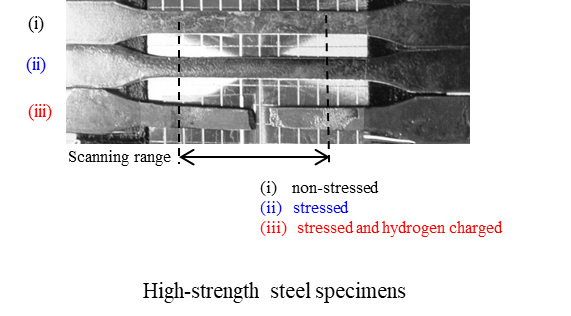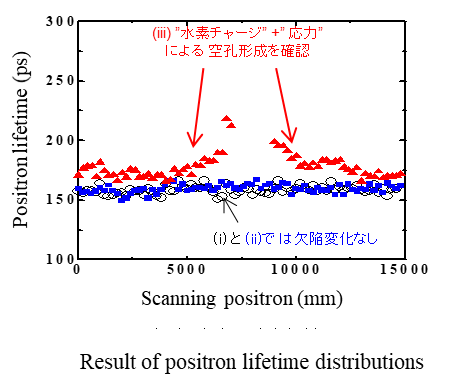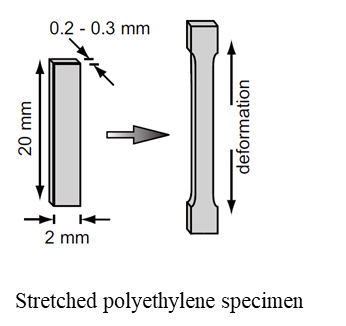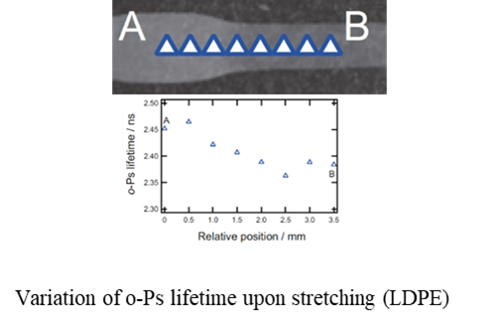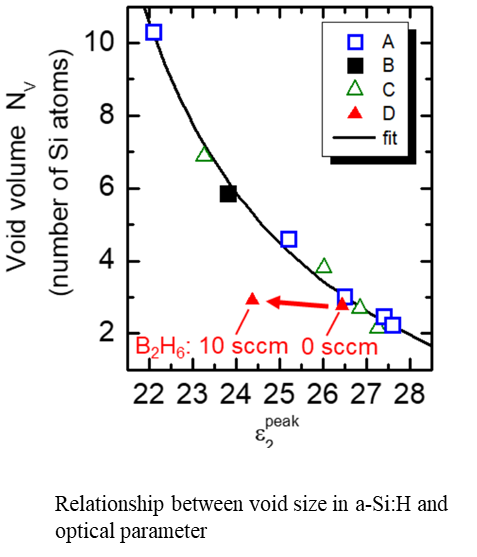Positron Probe MicroAnalyzer(PPMA) PPMA is a scanning positron microscope for mapping positron lifetimes in samples. The PPMA uses an intense positron microbeam (beam diameter <30 μm) generated from an electron linear accelerator.
Equipment
Positron Probe MicroAnalyzer (PPMA)
An intense positron beam generated by an electron linear accelerator is formed into a series of short pulses which are focused to micrometer size, and are then incident onto a sample. The structures of atomic and nanoscale vacancy-type defects / voids are evaluated by employing positron annihilation lifetime spectroscopy (PALS).
Time resolution
200 ps - 300 ps
Implantation energy 1 keV – 30 keV Beam diameter
0.01 mm – 10 mm
Pulse duration
≧ 30 ns
Applications
・Structural evaluation of atomic and nanoscale vacancy-type defects / voids in membranes, bulk and powder materials.
・Evaluation of free volume in polymeric materials
・Mapping measurement of vacancy-type defect / void distributionsPrinciple and Features
・ Structures of vacancy-type defects and nano-pores can be evaluated by measuring the lifetimes of positrons or positronium (a bound state of an electron and a positron) in materials
・Non-destructive and high sensitive (ppm) detection of atomic and nanoscale voids Measurement with different characteristic implantation depth by varying the positron beam energy
・2D mapping of the positron/positronium lifetime measurement by scanning the positron microbeam on samples
Examples
・ Evaluation of relationship between hydrogen embrittlement and defects in high-strength steels
・The relationship between hydrogen embrittlement and defects in high-strength steels was investigated using the positron probe microanalyzer. Since the positron lifetime became longer in the vicinity of fracture surfaces for the tensile-stressed and hydrogen-charged specimen, it was found that vacancy-type defects and defect clusters are formed in the specimen.
・ Evaluation of structural change of stretched polymers
・The positron lifetimes of stretched low- and high-density polyethylenes were measured at different positions. It was found that the lifetime of the ortho-positronium (a bound state of an electron and a positron with parallel spins), which annihilates in amorphous regions of the polyethylene, was shortened in the stretched part. This indicates that the state of free volumes in the amorphous region changes due to stretching.
・ Structural analysis of a-Si:H/c-Si heterojunction solar cell
・The size of micro voids in a-Si:H was measured using the positron probe microanalyzer, and the relationship between the void size and an optical parameter was investigated. It was found that the void size as determined by the positron lifetime changes depending on the film formation temperature, and that the size is correlated with the optical parameter.
Other examples
・Evaluation of pores in fullerene powders
・Elucidation of the mechanism of formation of vacancy-type defects and voids in the plastic deformation and fatigue fracture processes of structural materials
・Evaluation of free volumes in reverse osmosis membranes
・Defect analysis of oxide semiconductor films


